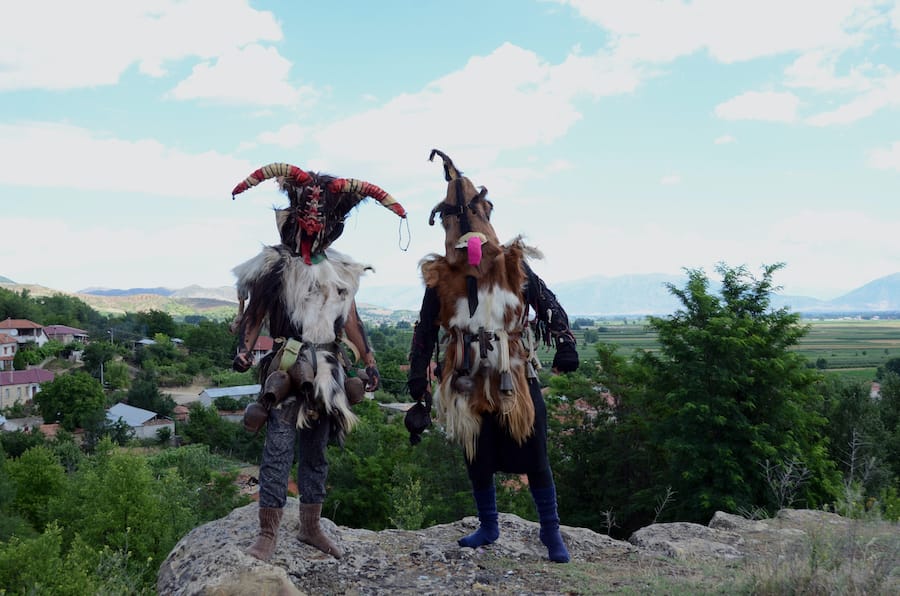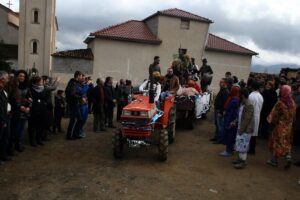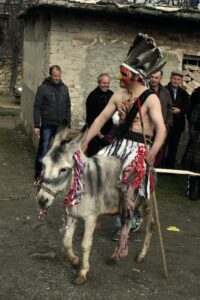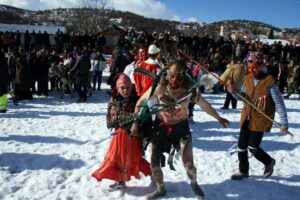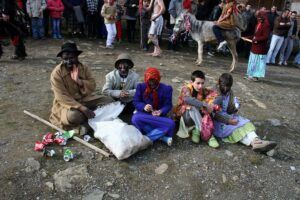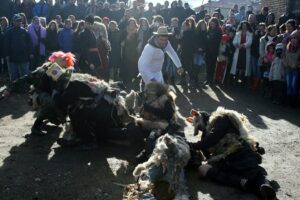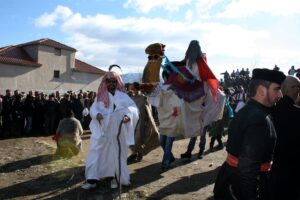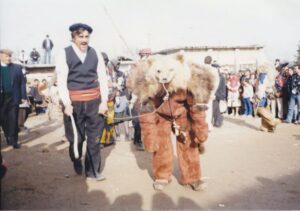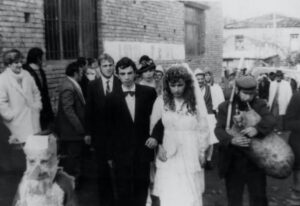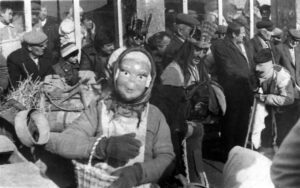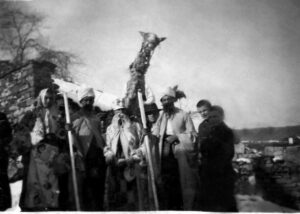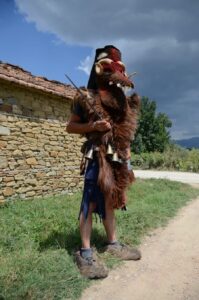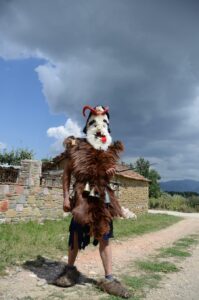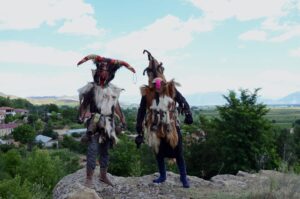Arapët e Polenës (dark-colored animal-like dressed with totemic masks), is a masked rite, practiced by adult boys (adolescents) and men of the village. This rite is held on January 6, after the religious celebrations for the Blessed Water. Having masks as a distinctive feature, men disguise themselves as different characters. A group of 10 boys disguise themselves as Arapë and prowl around the village in the afternoon, on the 5th of January, scaring and playing games with people in every house, square, and along the street. The next day, Arapët resume the games after the religious liturgy, holding a popular show in the village square. This joyful show involves also other masked characters standing out as the bride, the groom, some wedding guests, the thief, and the doctor, as well as other groups of masked people undertaking to represent other racial identities such as Indians, Roma, Arabs, and so on. Other figures constantly met in this ritual are the camel and the bear.
The folk show features a line and plot that strives to remain the same, introduced as a popular performance by the above characters. In the center of the village, the simulated wedding between the groom and the bride commences, celebrated by several wedding guests. Arapët is now and again mindful that the wedding goes as traditionally held and that the inhabitants do not make trouble or harass the bride or the groom. The Thief appears from the people gathered around there and will supposedly kidnap the bride. Arapët, as the game show goes, will try to protect the bride and bring her back to the groom. In this fighting, several Arapë get injured and so receive treatment from the Doctor.
The characteristic of the rite is the disguising of the characters. Using stage props and circumstantial tools, inhabitants make the masks and costumes of the whole group participating in the rite. Disguising in certain cases is complete, in some others it is conventional. The materials used are mainly ragged clothes and other accessories, designed to suit the character to be disguised. Typical is the mask of Arapë, which is made from the skin of cattle, cows, sheep, ram, and calves. People involved wear animal skins all over their bodies and face. Bells of different shapes and sizes are fitted onto their belt. This makes the rite of Arapë, organizational aspect aside, an enjoyable experience as well.

